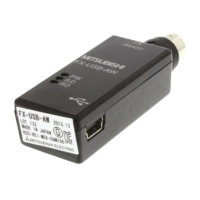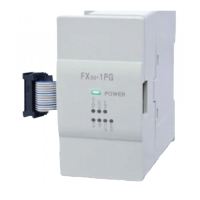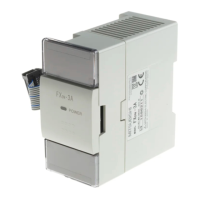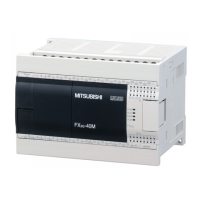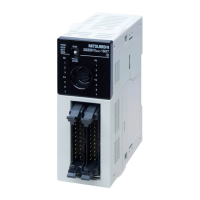7 Applied Instructions
7.6 High Speed Processing
318
FXCPU Structured Programming Manual
(Basic & Applied Instruction)
Function and operation explanation
1. 16-bit operation (PLSR)
Pulses are output from output (Y) specified by by the number of output pulses specified by with
acceleration/deceleration to the maximum frequency specified by over the time (ms) specified by .
Refer to "Cautions" for setting , , and
.
2. 32-bit operation (DPLSR)
Pulses are output from output (Y) specified by by the number of output pulses specified by with
acceleration/deceleration to the maximum frequency specified by over the time (ms) specified by .
Refer to "Cautions" for setting , , and .
3. Pulse output specifications
• Simple positioning (with the acceleration/deceleration function)
The operation pattern is as shown below:
• Output processing
The pulse output is controlled by the dedicated hardware regardless of the operation cycle.
• Data change while the instruction is executed
Even if operands are overwritten while the instruction is executed, such changes are not reflected
immediately. The changes become valid the next time the instruction is driven.
Acceleration/
deceleration time
Pulse frequency (Hz)
Total number of
output pulses
(PLS)
Acceleration
deceleration time
Maximum
frequency
s1
s2
s3 s3
Command input
PLSR
EN
s1
s2
ENO
d
s3
Maximum frequency(HZ)
Total number of output
pulses(PLS)
Acceleration/deceleration
time(ms)
Output numbe
(Y000,Y001)
Command input
DPLSR
EN
s1
s2
ENO
d
s3
Label 1
*1
Label 2
*2
Label 3
*3
Output number
(Y000,Y001)
*1. This defines the maximum frequency (Hz).
*2. This defines the total number of output pulses (PLS).
*3. This defines the acceleration/deceleration time (ms).
Maximum frequency (Hz)
Acceleration/
deceleration time
Pulse frequency
(Hz)
Total number of output pulses
s1
s2
s3
Acceleration/
deceleration time
s3
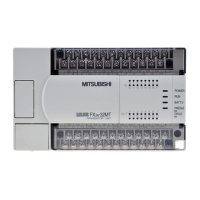
